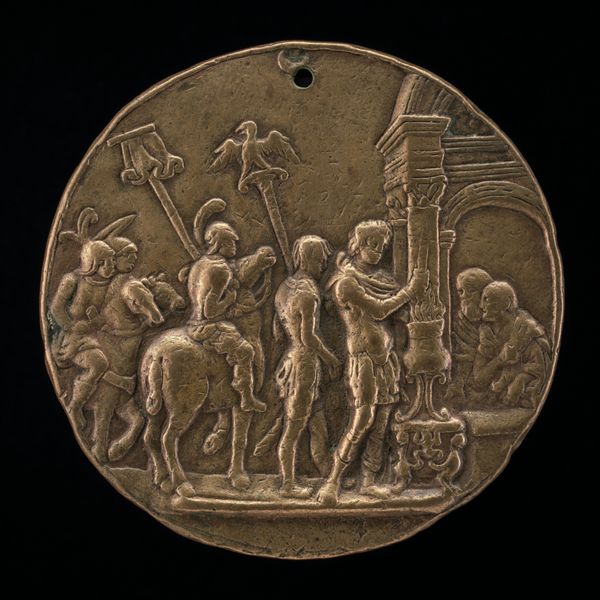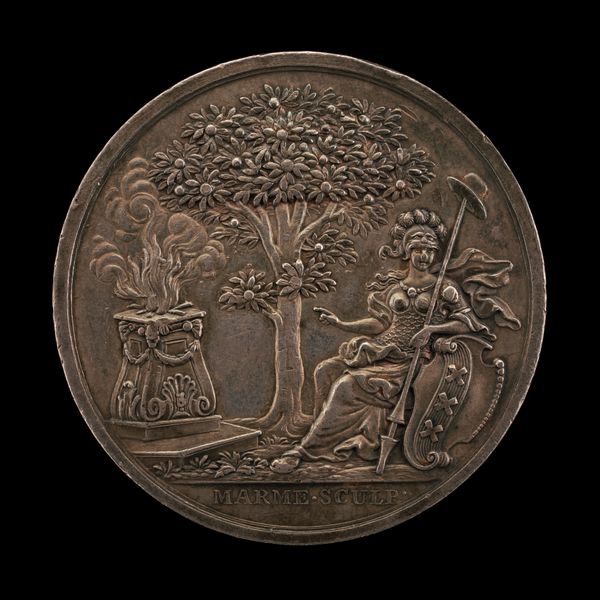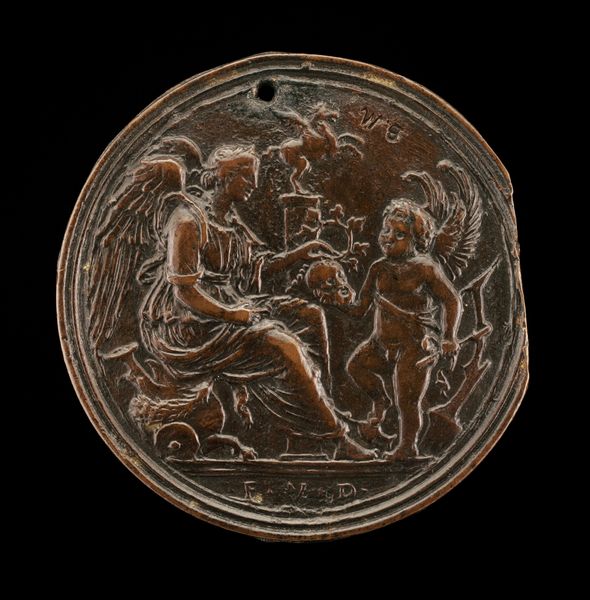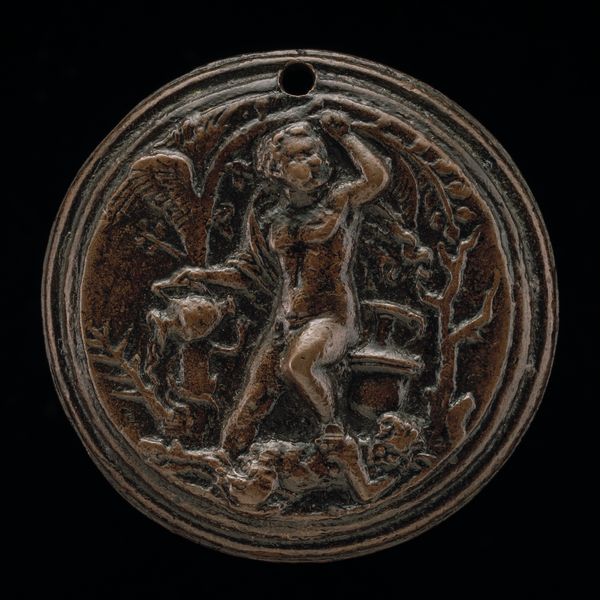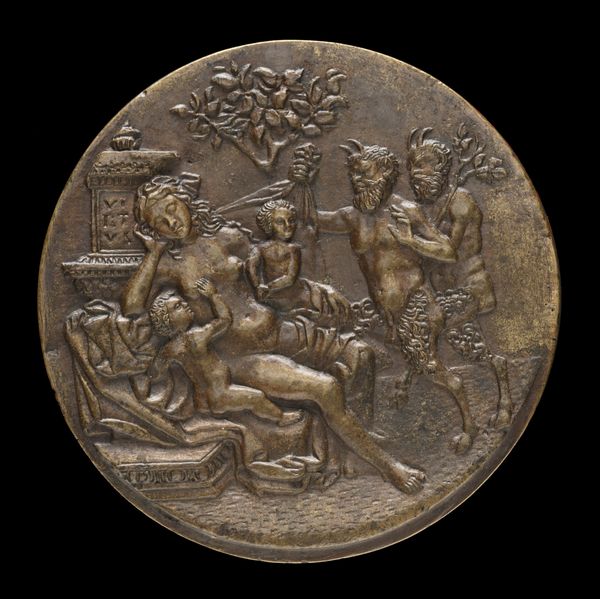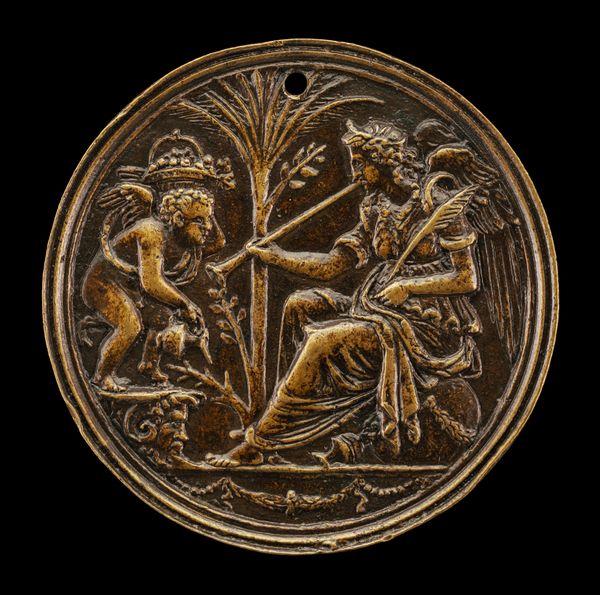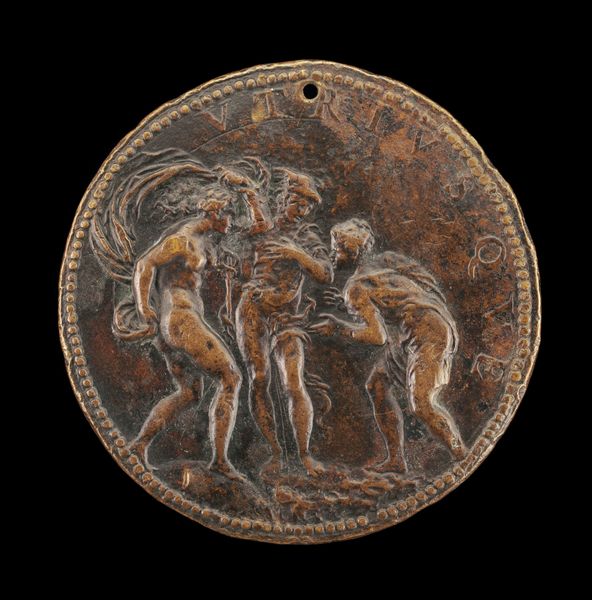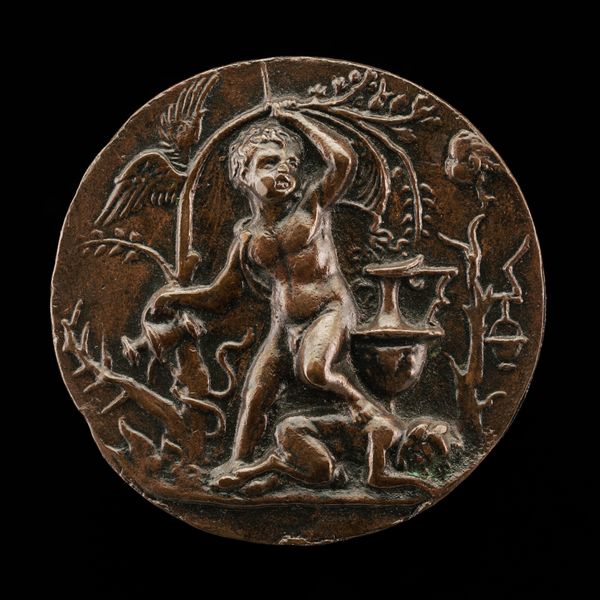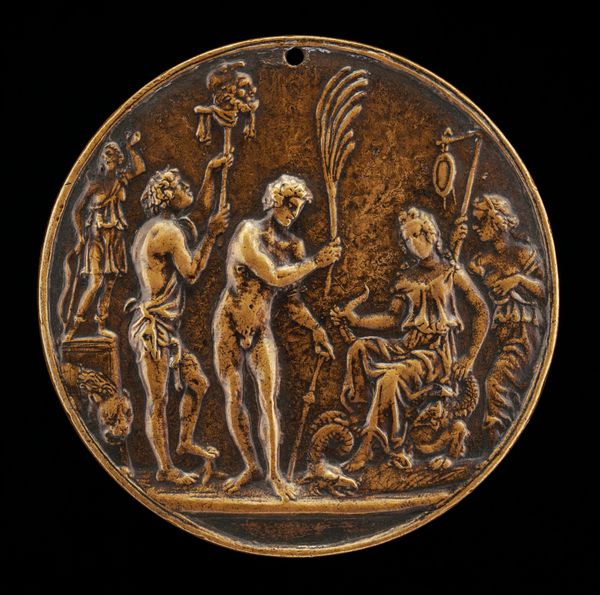
relief, bronze, sculpture
#
narrative-art
#
sculpture
#
relief
#
bronze
#
figuration
#
11_renaissance
#
sculpture
#
history-painting
#
italian-renaissance
Dimensions: overall (diameter): 6.18 cm (2 7/16 in.) gross weight: 56.32 gr (0.124 lb.)
Copyright: National Gallery of Art: CC0 1.0
Editor: So, here we have Caradosso Foppa’s "Marine Scene," a bronze relief from the Italian Renaissance. It depicts what appears to be some kind of shipwreck, maybe? It feels quite theatrical and meticulously crafted, especially considering the scale. What draws your eye when you look at this piece? Curator: The political implications are quite interesting. The Renaissance witnessed a rise in civic humanism, and the public sphere became fertile ground for expressing social and political ideals through art. These reliefs often served as decorations for ceremonial objects or architectural spaces. Is this potentially propaganda, showcasing civic responsibility or warning against the dangers of hubris leading to downfall? Editor: Propaganda? That’s unexpected, I would not think of it as propaganda. Can you say more about this? Curator: Well, think about who was commissioning and viewing works like this. Renaissance art wasn't just for the elite; it was a civic project. Sculptures like this might serve to communicate power, justice, or civic virtues. The figures, their drama – consider if they echo contemporary political events, perhaps a reminder of Florence’s maritime power or, conversely, a cautionary tale of overreach? The wizard figure, too, could be a comment on power or deceit, something worth examining. Editor: So, instead of a straightforward scene, we should be looking for possible hidden messages aimed at a specific audience? Curator: Exactly. This wasn’t merely decorative; it was likely a considered statement within a broader conversation about governance, morality, and the city-state's role in the world. Do you see anything within the image, now, that could reveal its target demographic? Editor: I see that the composition creates this incredible tension. Viewing it through that historical lens, I realize it demands closer, more thoughtful consideration. Curator: Yes, precisely. Renaissance art, when approached with this political and historical perspective, unlocks layers of understanding that go beyond initial aesthetic appeal.
Comments
No comments
Be the first to comment and join the conversation on the ultimate creative platform.
